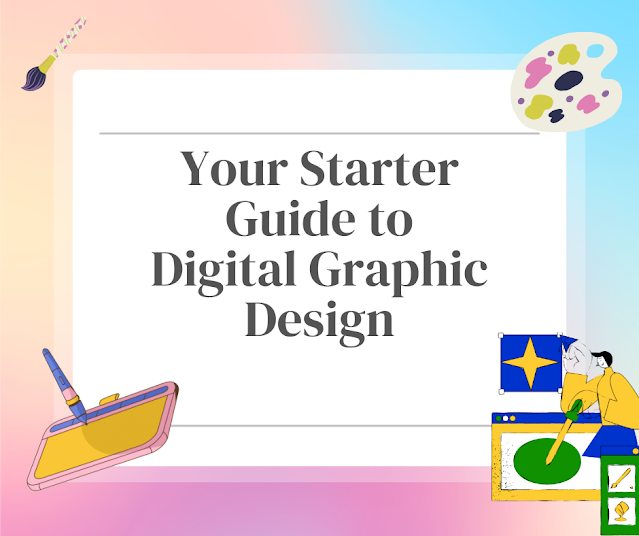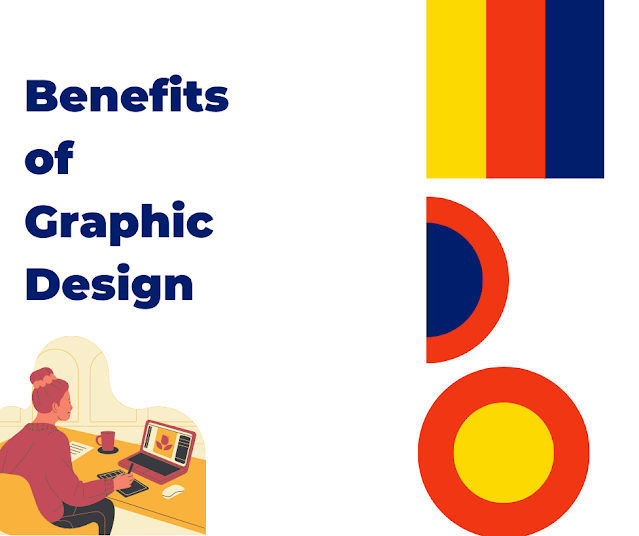Your Starter Guide to Digital Graphic Design
Digital graphic design has transformed the way we communicate, express ideas, and engage with visual content online. In this comprehensive guide, we'll delve into the fundamental aspects of digital graphic design, from its importance and key principles to essential tools and techniques.
Whether you're an aspiring designer or someone looking to understand the basics, this guide will provide you with valuable insights to get started on your creative journey.
Understanding Digital Graphic Design
At its core, digital graphic design is the art of visually communicating ideas using digital tools. It involves creating graphics, illustrations, and layouts that effectively convey messages to a target audience. With the rise of digital media, graphic design has become an integral part of branding, marketing, user experience, and more.
In the digital age, a strong visual identity is crucial for businesses and individuals alike. A well-crafted logo, color palette, and consistent design elements create a memorable and professional impression. Brands that invest in visual identity establish credibility and build recognition, which are essential for standing out in a competitive online landscape.
Staying updated with design trends and embracing innovation is crucial for maintaining relevance in the ever-evolving digital landscape. Experiment with new techniques, styles, and technologies to push the boundaries of your creative work.
Taking a Graphic design course in Delhi can be helpful in gaining knowledge and experience in this field og digital graphic design.
Key Principles of Design
Several design principles guide the creation of visually appealing and effective graphics:
Contrast: Contrast between elements, such as colors, sizes, and fonts, creates visual interest and helps highlight important information.
Hierarchy: Organizing elements in order of importance guides the viewer's attention and improves the overall readability of the design
Balance: Achieving visual equilibrium through the distribution of elements ensures a harmonious and pleasing composition.
Repetition: Repeating design elements, such as patterns or shapes, creates a sense of unity throughout the design.
Alignment: Proper alignment of elements enhances clarity and gives the design a polished look.
Essential Tools for Digital Graphic Design
Mastering digital graphic design requires familiarity with various software tools:
Adobe Photoshop: A versatile tool for image editing, retouching, and creating complex visual compositions.
Adobe Illustrator: Ideal for creating vector graphics like logos and illustrations that can be scaled without loss of quality.
Canva: A user-friendly platform with templates for social media graphics, presentations, and more.
Figma: A collaborative interface design tool for creating user interfaces and interactive prototypes.
Typography and Fonts: Typography plays a pivotal role in design, as it impacts the readability and mood of the content. Choosing the right fonts and understanding how to use them cohesively can greatly enhance the visual appeal of your designs.
Color Theory: Colors evoke emotions and convey meanings, making color theory a crucial aspect of graphic design. Understanding color combinations, contrasts, and their psychological effects is essential for creating visually captivating designs.
Creating Engaging Graphics for Social Media: In the era of social media dominance, crafting eye-catching graphics is vital for capturing users' attention. Use bold visuals, concise text, and on-brand elements to create graphics that resonate with your target audience.
Designing for User Experience (UX): Designing for a seamless user experience involves creating interfaces that are intuitive, functional, and visually pleasing. Prioritize user needs, clear navigation, and consistent design elements to enhance the overall usability of your digital products.
Conclusion
Embarking on your journey into the world of digital graphic design can be both exciting and rewarding. By understanding the core principles, tools, and techniques, you'll be well-equipped to create compelling visuals that leave a lasting impact. Remember, practice and continuous learning are key to honing your design skills and making your mark in the dynamic realm of digital creativity. So, go ahead, unleash your imagination, and let your designs shape the digital landscape!



Comments
Post a Comment